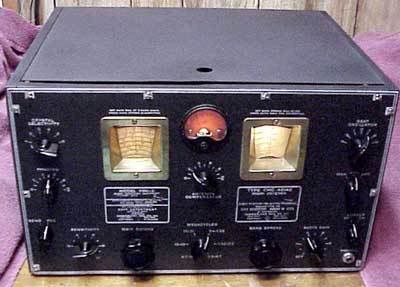It was with a bit of sadness that I read earlier this week that Tom Kneitel, ex-K2AES was now a Silent Key.
My discovery of Tom Kneitel as a writer and editor actually predates my involvement in Amateur Radio by more than 10 years.
It was December 1970; I was 10 years old and my sister was set to be married the following month. Her future father-in-law gave our family a Hallicrafters CB3A CB transceiver, a 5/8-wave ground plane antenna (the CLR-2 for those who remember them) and a Turner +2 mic. With the antenna laying between the top of the water heater and the clothes washer plumbing, I worked feverishly to make a contact with the 8-channel, rock-bound CB. The only person I ever talked to was local jeweler Wathen Bottom. But the important thing was that I was hooked on radio.
The CLR-2 finally was mounted on 25 feet of tower outside the following Spring. CB had not yet turned into the radio version of the Wild Wild West. My curiousity about radio grew, and the local library actually had a copy of an ARRL handbook in the stacks.
I also found copies of magazines like Popular Electronics and later, Popular Communications. I also discovered a CB magainze called “S9.” Somewhere in the pages of these magazines began my education about the world of radio outside 11 meters, and I remember specifically seeing Tom Kneital's name all over the place.
By high school, I had met my friend Scott via CB, and we both were avid SWLs. He had a family member loan him a Hallicrafters SX-28, which was a superb receiver. I used an old multi-band (AM/FM/SW/AIRCRAFT/POLICE) radio my brother owned for a while, then graduated to a borrowed KnightKit Star Roamer that had audio stages that went into howls of oscillation if the gain was set loud enough to hear the weak stations.
It wasn't the best, but it let me enter SWL'ing on the cheap, and it was great fun. Sundays were always the big days as an SWL because most foreign broadcasters transmitted their SWL programming on Sundays. HCJB had their “DX Party Line,” and the other big broadcasters had their own programming aimed at those of us who tuned in.
Scott and I scored QSLs by the box full. HCJB always had deluxe QSLs that changed with the season. Some of the Soviet-bloc countries were also excellent QSL'ers. Radio Prague was one of my favorites. Radio Moscow was another favorite too.
I quickly learned that the news reports on certain stations (i.e., Radio Moscow, The Voice of Havana, etc.) were rather slanted in their views and the news they covered. I can still remember hearing Cuban programs telling about how wonderful life was in the Communist island country. And the propaganda they sent — I wondered for years of the FBI had a file on me for un-American SWL'ing.
But Tom Kneitel opened up many new doors for me in the radio hobby. I bought a number of his books during my SWL years. I moved into utility station chasing and began to pursue getting verifications from non-broadcast stations. My proudest confirmation was from an HF Air Traffic Control station in the Fiji Islands. Using a prepared reply card, all they had to do was to confirm the information and send it back. They also sent a nice letter and some stickers and flyers on the country.

Another favorite author along the same lines was Gerry L. Dexter. I bought a number of his books too from Tiare Publications out of Wisconsin. One of my most-used references for utility monitoring was my Klingenfuss frequency guide, a comprehensive list of utility stations and their frequencies. Armed with this book, I really hit my stride and a “ute” listener. At this time I had moved up to an RBG-2, the Navy version of the Hammarlund HQ-120X. The 5-kc dial markings didn't give exacting frequency readouts, so the book was crucial to quoting the correct frequency when seeking an elusive “ute” station QSL.
The book — it was a fairly thick one too — has been replaced by a CD-ROM. The ARRL sells the shortwave frequency guide, but not the utility guide, which is still available directly from Klingenfuss. Maybe this winter I can sit down on one of those cold, clear, starlit nights, put on the old HS-33 headphones and go after some SW or ute DX.
I have my old RBG-2 out in the garage. Its a rather rare old chap, though I'm sure it needs some work — like new caps throughout. But man alive, the crystal filtering it had was just so very sharp — I never understood the purpose of the narrowest, sharpest postions that made phone unintelligible. Little did I realize that I would finding out soon enough the purpose — and beauty — of good, sharp filtering.
Nostalgia's ok, but with DSP and PLL, who wants to determine the operating frequency with an accuracy of +/- 15 kHz? Besides, my IC-756PROIII is much easier to lug around than the Navy boat anchor in the garage.
I miss my subscription to Pop Comm. Of any radio magazine I've subbed to, I probably read more issues of that cover-to-cover. I've got to go to the city this week, I need to check for a copy of Pop Comm on the newsstand.
Enough nostalgia … back to the future … 73 .. dit dit …
